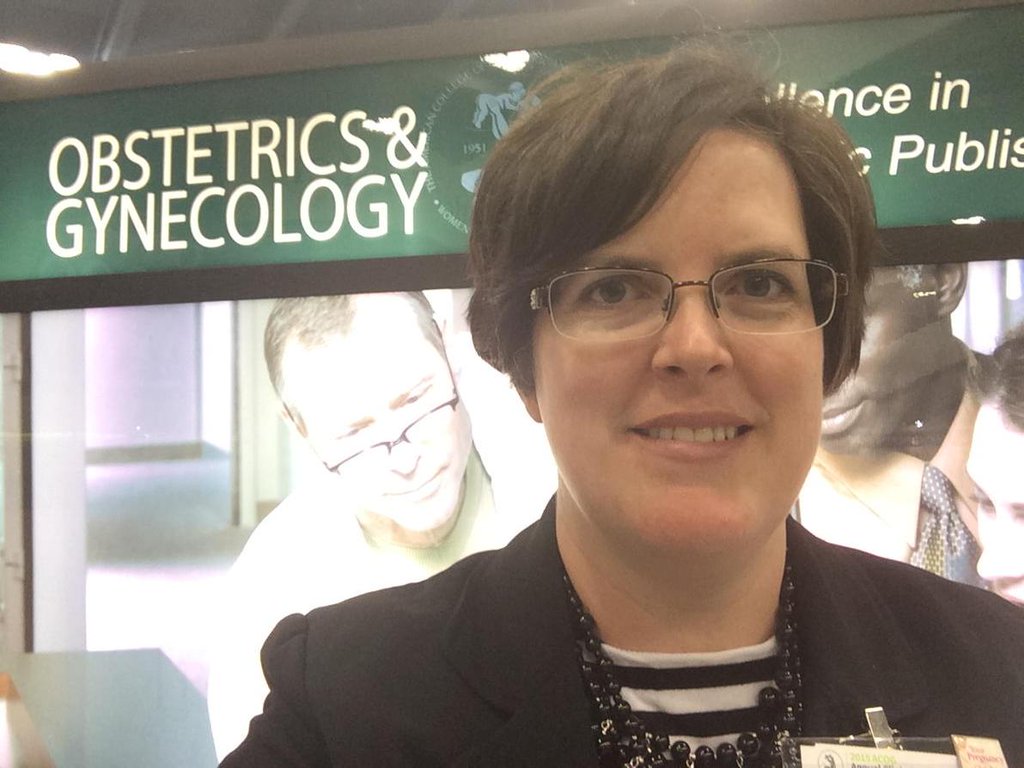Know More About Journal Editorial Processes: An Interview with Rebecca Benner (Part 1)


At the ISMTE conference this year, Enago’s Kuntan Dhanoya (Vice President, Business Development) had the opportunity to speak with Rebecca Benner, Senior Director and Managing Editor, Obstetrics & Gynecology (The Green Journal). Currently, at Obstetrics & Gynecology, Rebecca is responsible for coordinating the efforts of authors, reviewers, the editorial board, editors, staff, and publishers, as well as those involved in journal production. She is also responsible for managing the peer review process, as well as establish and evaluate policies and procedures. In the past, in addition to her responsibilities at Obstetrics & Gynecology, Rebecca has also been an active member of the Council of Science Editors and has helped establish CSE’s International Scholarship Program. Currently, Rebecca is also the Adjunct Faculty for the Master’s in Professional Studies program at George Washington University.
In the first part of this interview, we focus on Rebecca’s journey in the publishing industry. Based on her rich experience, she highlights several key points that researchers should know about the publication process, and explains in detail how journals, academic societies, and publishers are involved.
Kuntan: You have over 10 years of experience managing Obstetrics & Gynecology, which is one of the most respected and consulted journals in the industry. Could you tell us a bit more about your roles and responsibilities as well as share some insights about the journal?
Rebecca: Obstetrics & Gynecology is a monthly, peer-reviewed journal owned by the American College of Obstetricians and Gynecologists (ACOG) and published by Wolters Kluwer Health. We have over 46,000 subscribers who are fellows of the American College of Ob-Gyns. They are practicing physicians, mostly in the United States but some are located internationally as well. Our journal is focused on clinical medicine and we receive over 2,200 submissions per year, and we accept probably between 18% and 20% of them. Most articles go through peer review, although we have started editorially rejecting some submissions without peer review. Peer review normally consists of three readers: one member of our editorial board, who provides general oversight, and two experts in the field. We have three editors—an Editor-in-Chief, an Associate Editor in Gynecology, and an Associate Editor in Obstetrics. They are not based near our office so we don’t see them in person regularly, but we do talk with them over the phone once per week, when we discuss the manuscripts and decide whether they should be rejected, sent back for revision, or accepted. In this manner, the three editors and our statistical editor consult each other on all the manuscripts that come through our office. Hopefully, this is reassuring for authors to know that it’s not as if one person has the final say on everything. Our review is really a collaborative effort and we have a great team.
Kuntan: That is fantastic. Can you tell us a little bit more about your role as Senior Director and Managing Editor for the journal and the society?
Rebecca: At present, there are five people working for the journal full-time: myself as the managing editor, a manuscript editor, a production editor, an editorial administrator, and an editorial assistant. Our editorial assistant and editorial administrator work very closely with the editors to manage the peer review process. My role is to oversee that process. By that I mean keeping an eye on what’s new and important in the field, and staying updated with materials coming out of the Committee of Publication Ethics, the Council of Science Editors, or any of the other professional publishing organizations to ensure that our editors are following the best practices and acting ethically. Also, we ensure that we are treating our reviewers and our authors well.
Every week we are looking at statistics: what kind of manuscripts we have, where they are in the process, how many are out for revision, how many are under peer review, and how many have been accepted for publication in the next issue. We are always monitoring the entire workflow to ensure that we are processing things in a timely manner and not building up a backlog. We also ensure that we don’t have too few manuscripts and end up in a jam at the end of the cycle. By examining other statistics on a monthly basis such as how long it took a paper to get through the process from submission to publication, how long it takes to get a manuscript through peer review, how long the editor takes to make a decision, and determine how long the manuscript stays in our office before it is transmitted to the publisher.
A significant part of my current job entails communicating with many different people, and I coordinate activities and communicate quite frequently with our commercial publisher, our production editor, and even with ad sales and marketing staff at the publisher, because it takes a big team to publish a journal. Along those same lines, another of my roles is to communicate with our society, the American College of Obstetricians and Gynecologists (ACOG). We have a publications department, a resource center, as well as a communications and marketing department. Although our journal is editorially independent from the college, we are of course part of the college, so I need to manage those relationships and be open and available to my colleagues. And of course, financial responsibility—monitoring the budget and making sure that we are on track—is an important component of my job as well. On the editorial side, one of my jobs is to monitor what we are publishing and ensuring that we are producing a quality product. Although I don’t copyedit manuscripts anymore, I certainly look at page proofs and I can advise on style matters. I also help our production editor work on art.
Finally, there is a web-based component of my job, which requires knowledge of the digital world—everything from a web platform to social media. Our journal is hosted on Wolters Kluwer’s platform, and every month when our issue goes live, we do some things behind the scenes to make sure that it looks good and add some extra content that we hope will be useful for our readers. As for social media, we are on Facebook, Twitter, and LinkedIn. And social media requires engagement by the editorial office. I work with my staff to think about what we are going to post that week and then monitor what we posted to see if there is conversation out there that we need to address and respond to in a timely manner.
Kuntan: You graduated with a BA in English and now you are managing a medical journal. Tell us about this transition from graduating with a BA in English to getting into the publication industry.
Rebecca: I remember very clearly being a junior in college and sort of panicking about what I was going to do with my career and my English major. I realized that teaching high school or junior high English was not something I wanted to do. So fortunately at SUNY-Geneseo (State University of New York at Geneseo), where I graduated from, they had connections with a program in Washington, DC and I was able to do an internship in Washington in the second semester of my senior year. I lived there for a few months and worked at the publications department of the National Museum of Women in the Arts. That was not scientific, technical, or medical publishing, but that is how I got into publishing itself. While in Washington, I applied for some jobs, including one at the American Institute of Biological Sciences. I was hired as their assistant editor, although it was basically just a copyeditor position. I found out right before I graduated that I had the job. I moved down to Washington with two suitcases, traveling on a bus two weeks after I graduated, and I have been there ever since. That first job gave me a very solid foundation in copy editing. I had a wonderful boss who was a very practical editor and a great advisor and mentor.
From there I moved over to ACOG. My title was production editor, but titles are sort of funny in STM publishing, because they can mean different things at different organizations. A lot of what I did was manuscript work—not copyediting per se, but getting a manuscript ready to go to the publisher. I was ensuring that various critical needs were met such as institutional review board approval, whether they cited all their tables in the text, and little things like that at the editorial level, along with ensuring that all the author queries are resolved before we sent the manuscript to the publisher. That is how I got into ACOG, and I eventually became the managing editor, which I have been ever since.
Kuntan: Your journal, Obstetrics & Gynecology, is one of the most complete and reliable sources of information on current developments in women’s healthcare. What are the major editorial challenges that you and your team face, and how do you maintain the high standards of publication?
Rebecca: One of the challenges is to keep up with the changing standards. STM as a field has been evolving pretty rapidly over the last 10 years, so just finding the time to keep up to date with what’s going on and what’s new in the field is a big part of my job. It can be very challenging because at the same time I am trying to make sure we get the journal out on time each month, so it can be quite a balancing act sometimes. Another issue is that the pace of communication is so different, just managing and prioritizing email communication can often be a challenge.
From the editorial perspective, finding good peer reviewers is a challenge. Peer review activity is not paid, and we are very grateful to all our peer reviewers for what they do for us, because they are ensuring that what we publish has gone through a rigorous test. But since they are not paid, we monitor peer reviews very carefully. We are careful not to assign papers to someone too often; we try to give at least two months between assignments. Also, we want to make sure that we are bringing in new peer reviewers. This year, we have been reaching out to different societies or subspecialty areas where we may not have a great representation among our reviewer pool, inviting people to sign up as peer reviewers. Once we get new peer reviewers, we place them in a separate category and give them an opportunity to complete four or five reviews. Then our editor-in-chief runs a report and takes a look at these new reviewers. Those that have high scores and have achieved a quick turnaround will move on to our general reviewer pool. When reviewers are on the borderline, our editor-in-chief might reach out with a personal communication and give them some tips on what they might change. And then some might be removed from our pool altogether. Our current editor-in-chief, who started in 2013, put this process in place, and I think that it has worked very well.
Kuntan: You have first-hand experience in editorial production, from copy editing manuscripts to running different aspects of publication. Researchers are highly involved in conducting scientific work and know very little about the publication process. Can you share some key points that researchers should know about journals, societies, and publishers?
Rebecca: Generally a journal is editorially independent from its organization or whoever owns the publication, because you need to have that freedom to publish research without interference by other interests. That is an important component to understand. Authors should also recognize that production and the editorial process are not like a switch that you turn on and off. Although we are publishing online, it is not instantaneous. It is not like pushing the print button on a printer; it requires a great number of people and a lot of coordination. People on the outside don’t realize how many people are actually involved behind the scenes or how many actually touch their manuscript before it ever sees publication.
There are also ethical issues that authors should be aware of. One of them is simply who is eligible to be an author. Authors should have good communication with their colleagues to ensure that everybody is on the same page and in agreement on who is going to be listed as an author of a paper. We see confusion around that point fairly often. By being named as an author, you are saying publicly that you are going to be accountable for what is in that paper, forever and ever. This is a very important, serious obligation. It is not just reading someone’s draft. I encourage all authors to really put their best effort into something before a paper is submitted. Often, authors seem to think that there will always be another chance to fix something before it goes into publication. Obviously, this is not true. I tell authors: although it may be a difficult task, not fun, or one that you would rather avoid, when you have the page proofs in front of you—or even better, when you have that document on your computer before you even submit it to the journal—take the time to share it with your colleagues and make sure that everybody has taken a very close look at the article and has signed off on it because as it moves through production, there is less and less time to correct whatever may be incorrect. The worst thing that can happen is if we are actually about to publish and someone calls to say they have found an error in their paper after having seen it so many times. I know it is tough, but I like to tell authors and even myself that when you have something in front of you, you need to give it your full attention and make sure it is as correct as you can make it at that time.
(This interview is a part of our interview series of connecting scholarly publishing experts and researchers.)







